Maersk
Twill to Maersk Go transition
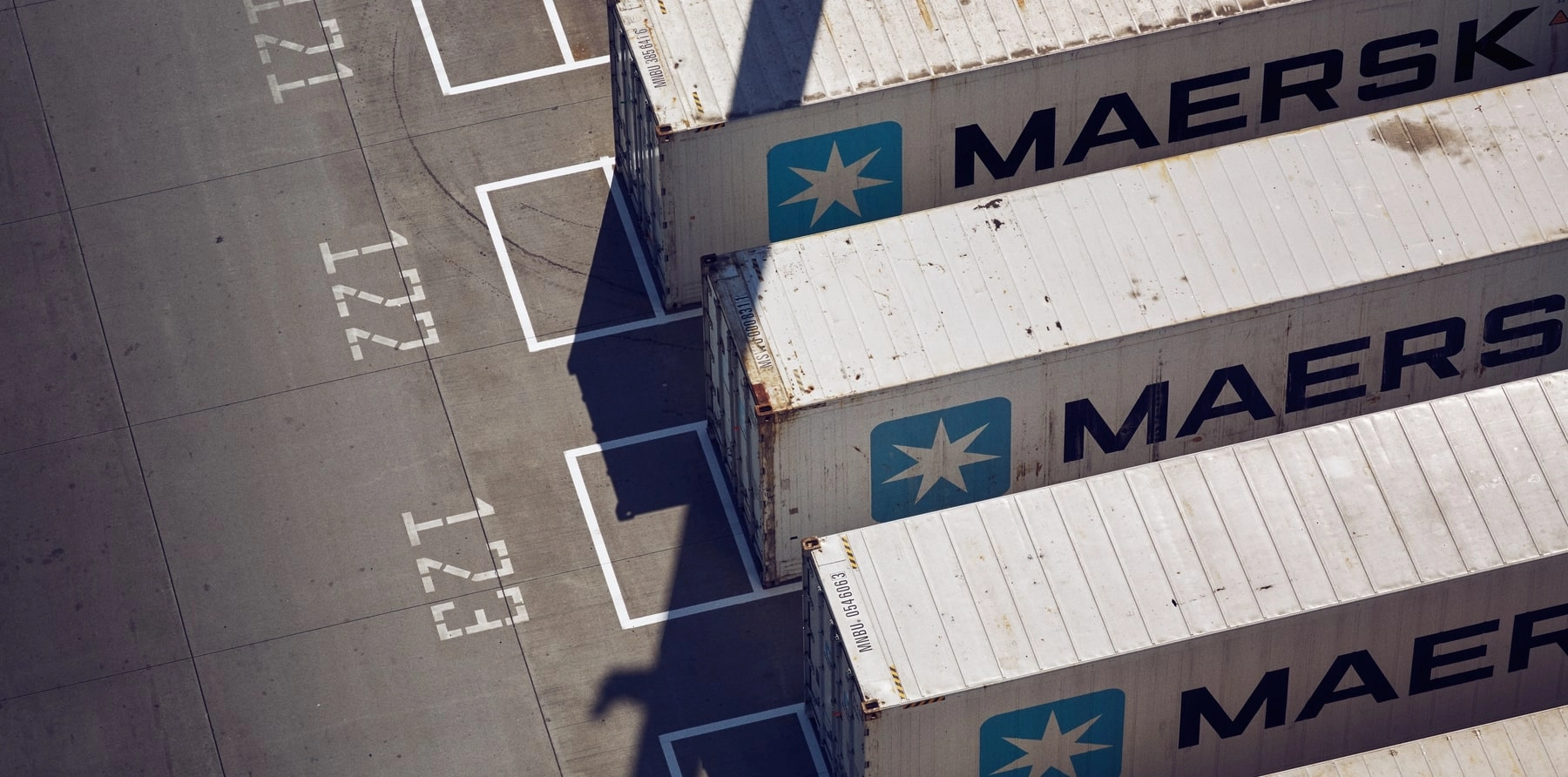
Project summary
Objective
Enable a successful integration of the Twill product into the Maersk platform by developing and executing the transition strategy. Guide and assist designers and developers during the process.
Industry
Main stakeholders
Deliverables
At the end of 2022, I joined Twill, at that time a sub-brand of Maersk. Twill focused specifically on delivering a self-service digital shipping platform for SMEs. In early 2023, it was announced that Maersk would retire all of its sub-brands in an effort to create a unified Maersk brand. Following this announcement, there was no clear plan in place for Twill. Over a six-month transition period, I collaborated closely with management, product owners, developers, and designers to develop and communicate a transition proposal to Maersk leadership. I played a key role in formulating the strategy, assisting team members, and ensuring technical feasibility, all of which contributed to a smooth transition.
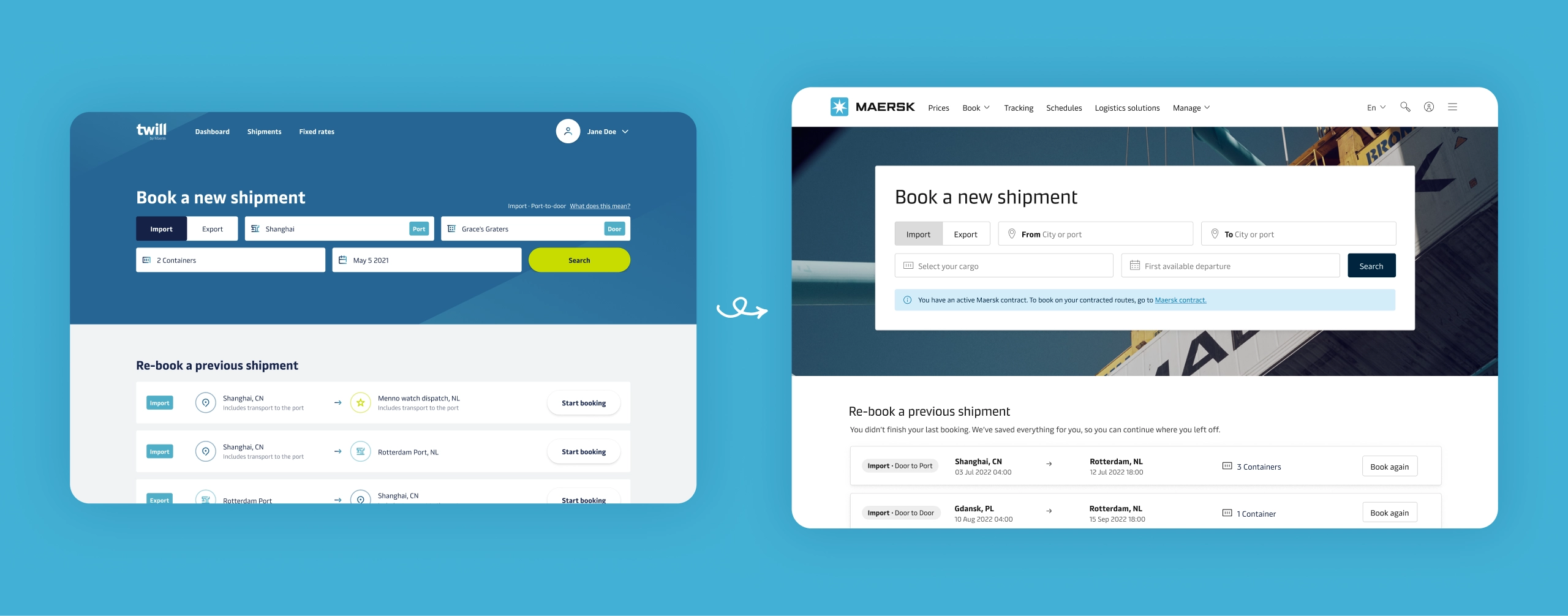
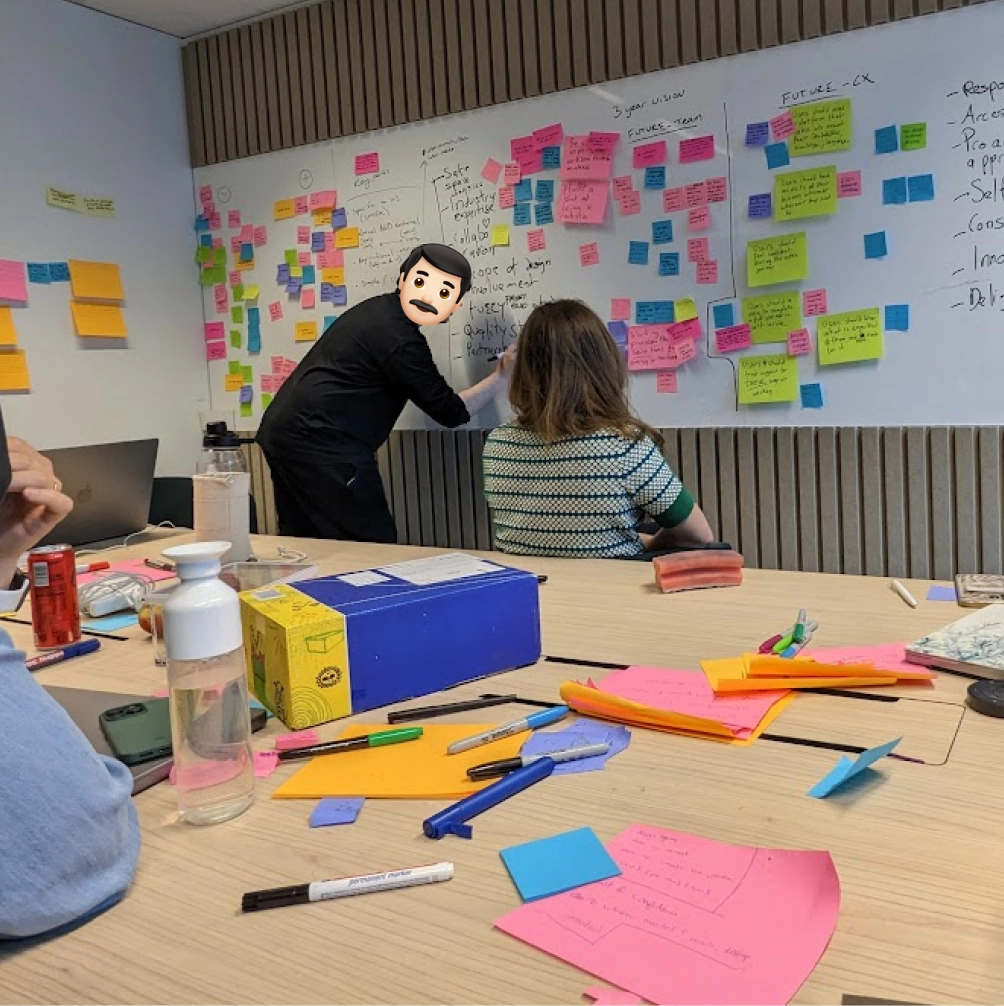
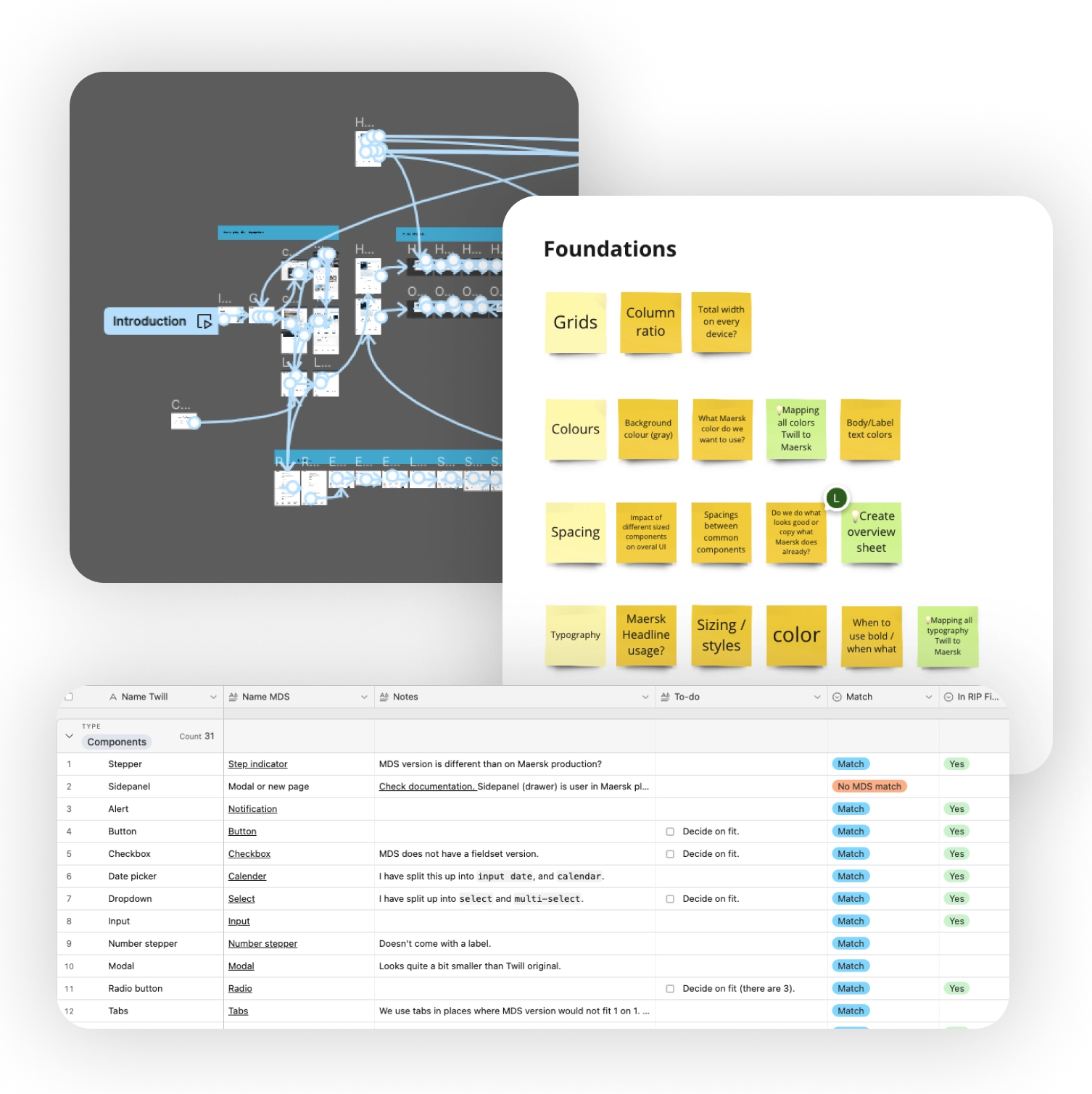
During the initial stages of the transition, our focus was on determining which parts of our user journey would retain our Twill designs and features, and which parts should be replaced by existing Maersk systems. Decisions were based on technical feasibility as well as user experience considerations. We evaluated which aspects of our product were crucial for user experience and should not be replaced with the Maersk alternative. Various methods, including brainstorms and journey mapping, were employed in this process.
My primary contributions during this phase involved creating exploratory designs and prototypes. I played a key role in bringing initial ideas and proposals to life, which helped drive top level conversations about the future of the product.
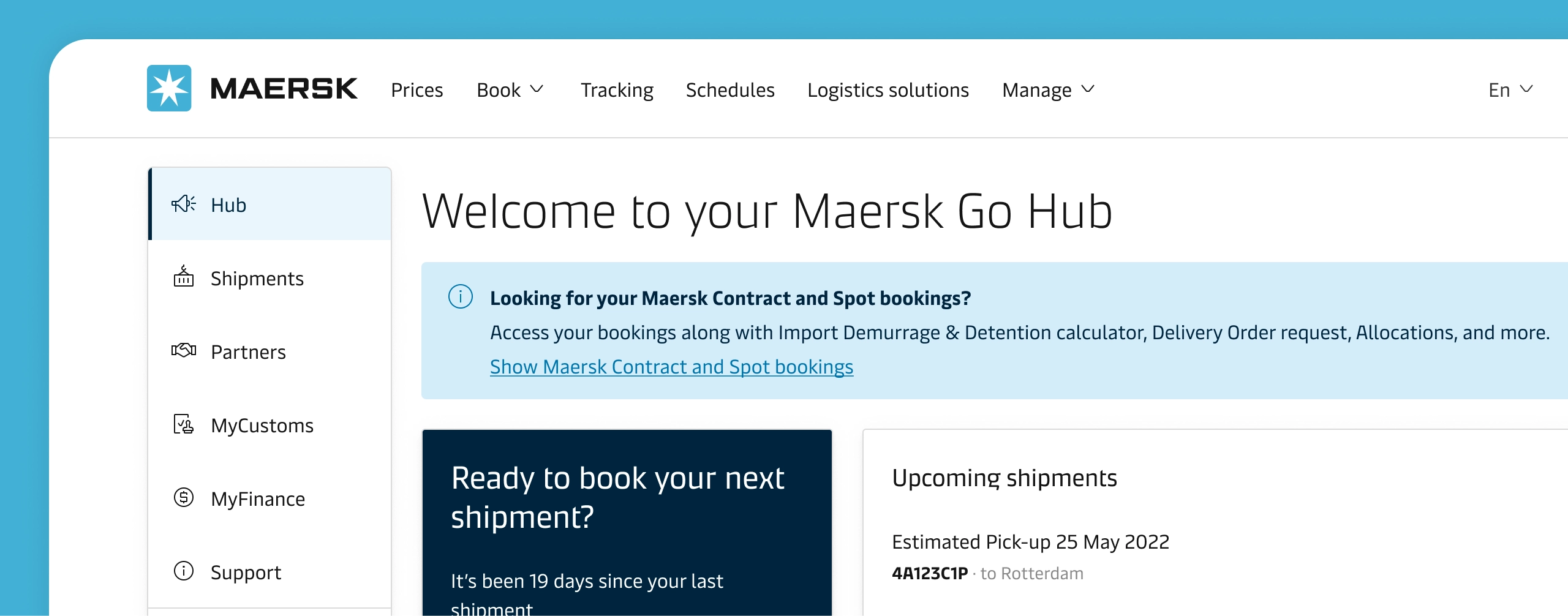
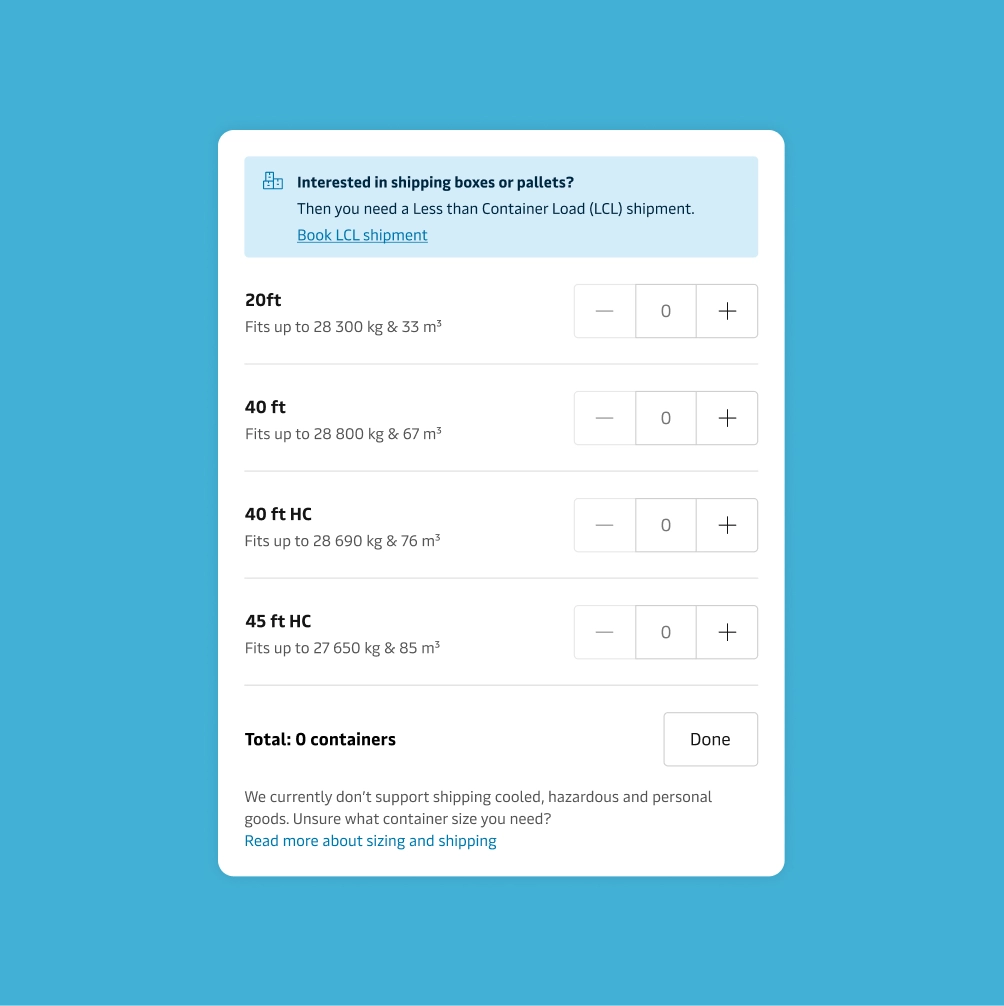
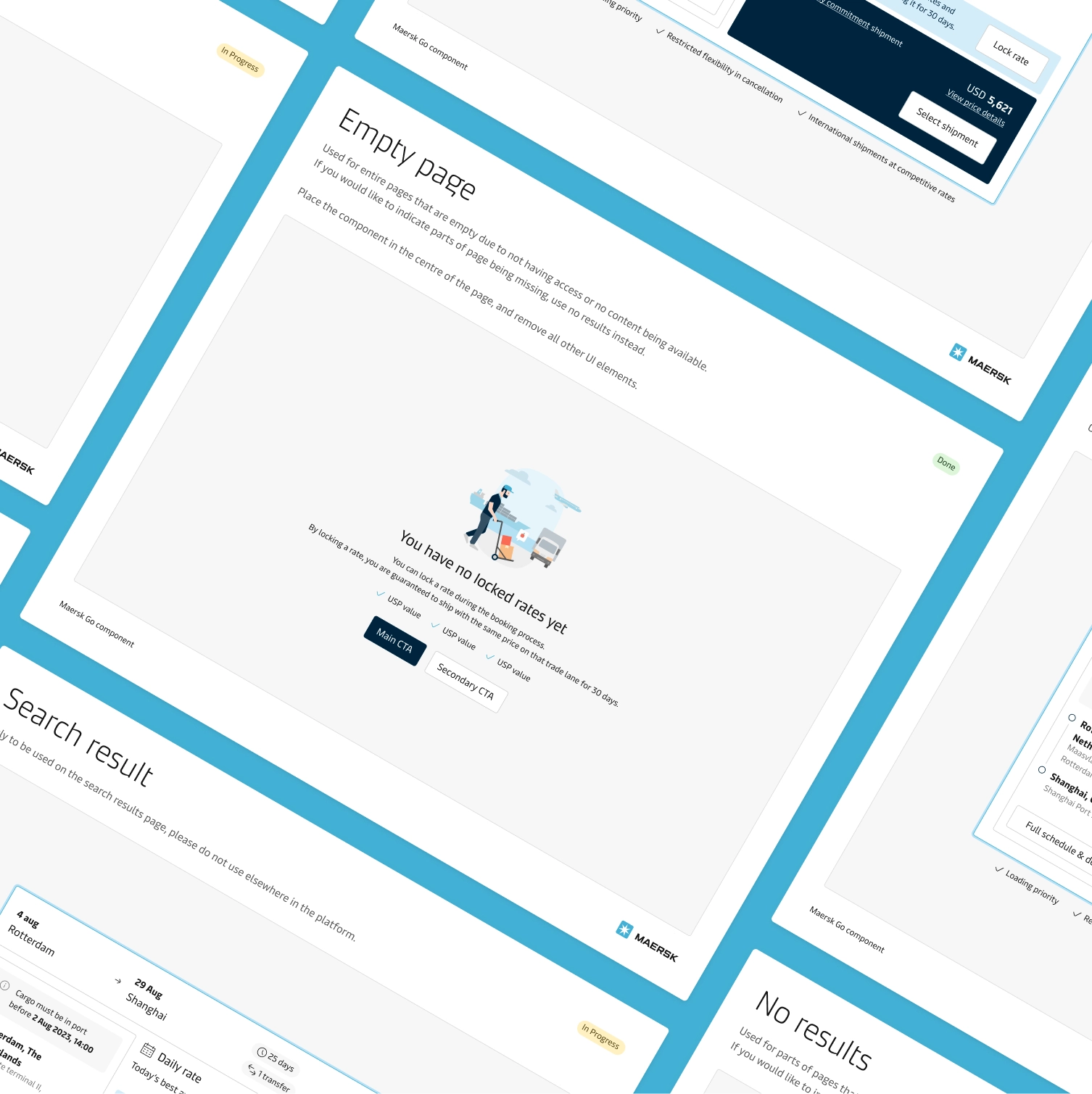
Once top-level approval for the scope of the transition had been obtained we could shift our focus to making our proposal a reality. As Twill has always had its own visual identity and UI patterns, the transition meant that it was a very UI-heavy project. In order to safeguard our easy-to-understand SME customer journey, we had to review many of our components and patterns. The design workload here consisted of various deliverables, such as mapping the Twill Design System to the Maersk Design System (MDS), creating upfront UI redesigns, redesigning core components to fit MDS, and creating new page layouts to accommodate both our Twill features and maintain consistency with the Maersk.com platform layout.
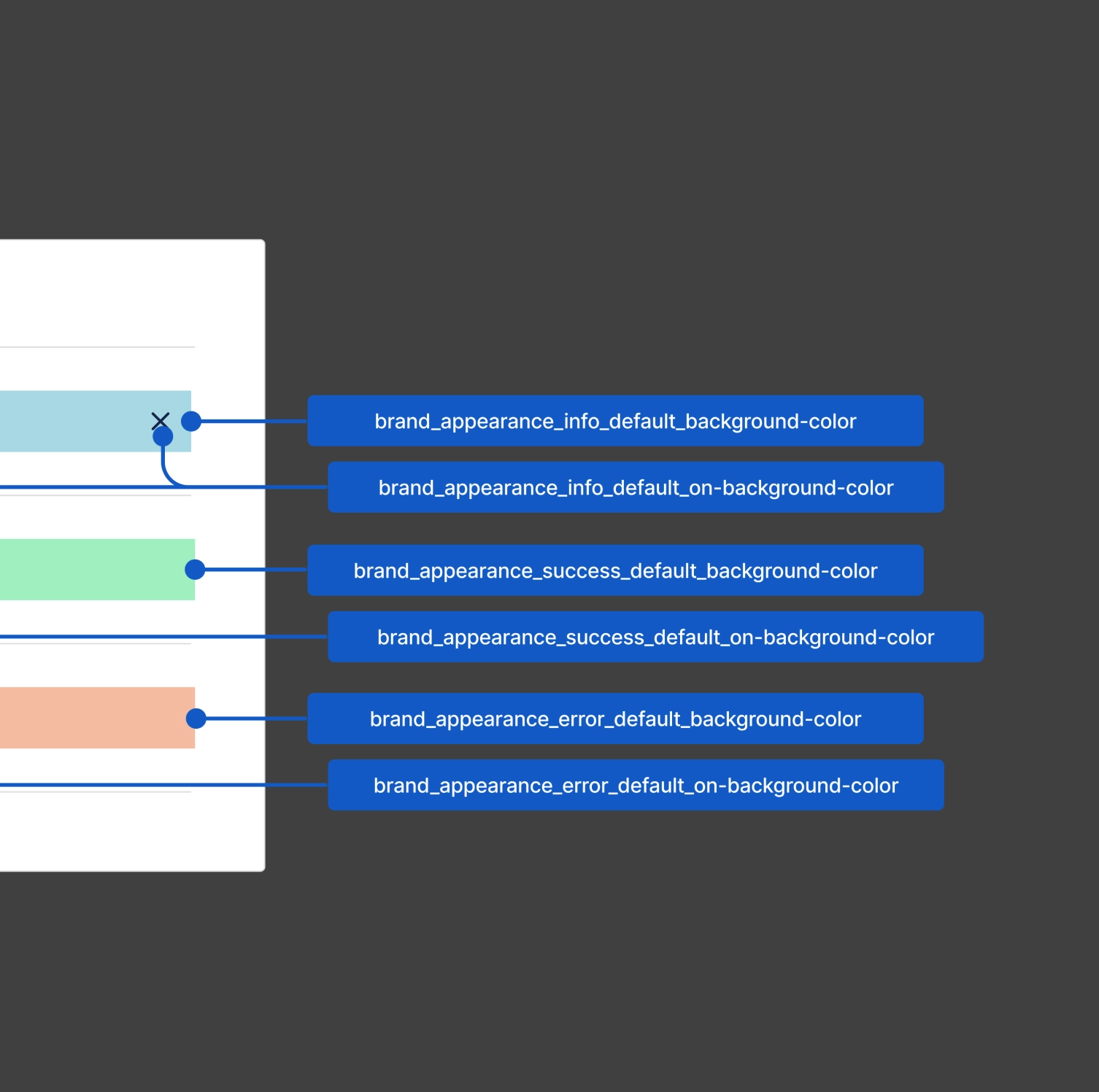
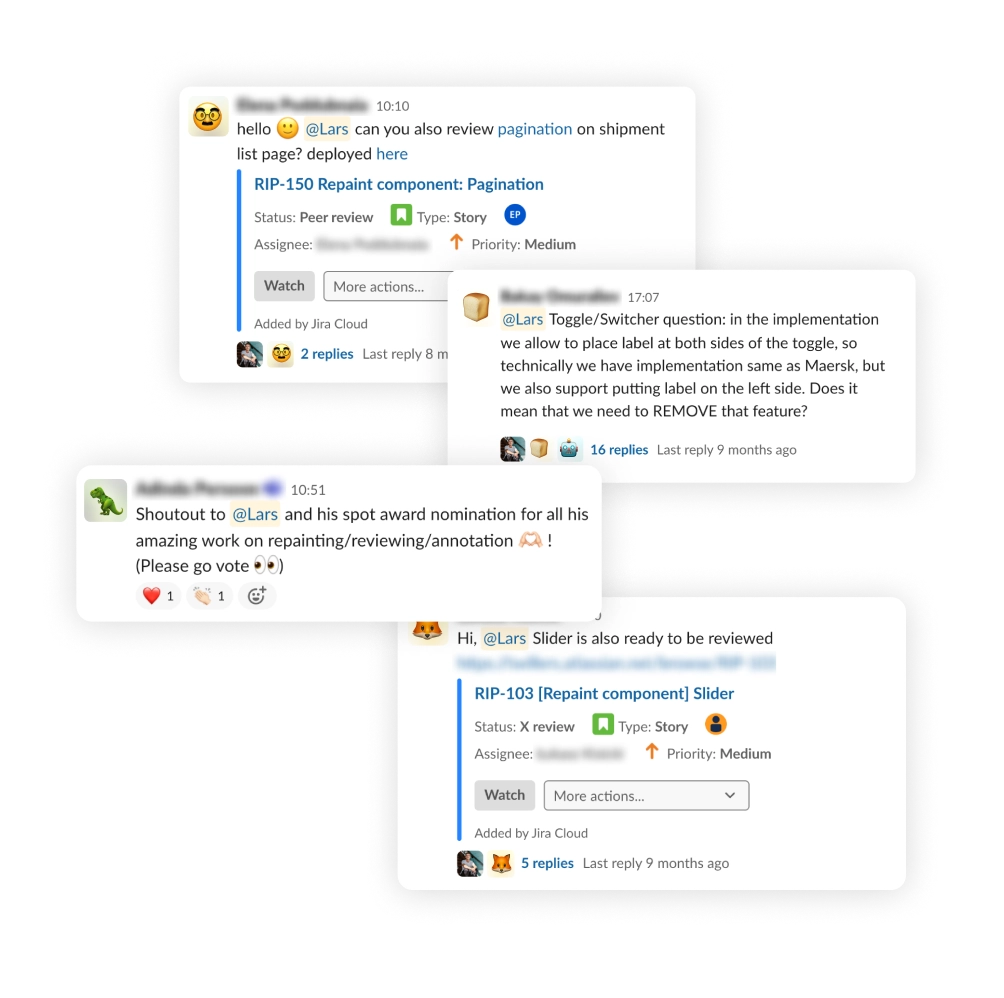
Throughout the project, I collaborated closely with developers. Ensuring an efficient handoff
and conducting reviews and checks.
I served as the go-to person in case of questions. To make efficient use of our time and ensure
we would meet extremely tight deadlines set by leadership, we did not create full redesigns of the
entire platform. Instead, I proposed and implemented an annotative approach. This included indexing
all fundamental parts of our platform and annotating them with the proper MDS tokens and tweaks needed
to create a consistent brand experience.
For my efforts with during the handoff process, I was nominated and won the company SPOT award.